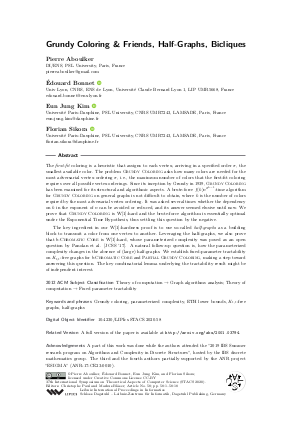LIPIcs.STACS.2020.58.pdf
- Filesize: 0.6 MB
- 18 pages

 Creative Commons Attribution 3.0 Unported license
Creative Commons Attribution 3.0 Unported license












Feedback for Dagstuhl Publishing